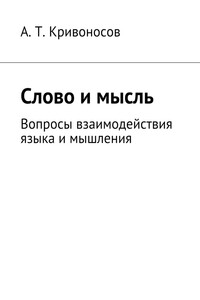35 35
Home exercise. Find equivalents to the following Russian word-combinations and use most of them in 5 sentences of your own illustrating the electromagnetic system of the brake.
Короткоходовон электромагнит (1); надеты на втулки со шлицевым соединением и посажены на вал (1); надеты на штыри, укрепленные в корпусе (1); кольцевой сердечник (2); равномерно расположенные, по окружности сердечников (2); приварен к корпусу (2); те же стержни (2); продольное направление (2); усиление пружины (2); устройство ручного растормаживания (3).
Built-in Brakes
1. The series motors are designed for operating with electromagnetical-ly operated brakes. In the operating principle these brakes belong to multidisk brakes actuated by short-stroke electromagnets. Braking results from friction between the rotating disks lined with a friction material and the stationary steel disks. The rotating disks are fitted on bushes keyed to the motor shaft. The stationary disks are fitted on pins secured in the frame.
2. The electromagnetic system of the brake consists of the two annular cores made of wound steel ribbon, and six coils uniformly spaced around the core circumference. One of the cores is stationary and is welded to the frame. The other core is fitted on the same pins as the stationary disks and is capable of moving in the longitudinal direction. Mounted between the frame and the movable core is the main braking spring. The spring force is applied through the movable core to the stationary disks and through the friction surfaces to the rotating disks. The brakes have provisions for manual unbraking, for adjusting the breaking effort through adjustment of the spring force and for adjusting the electromagnet travel to bring it to a normal value as the friction surfaces wear off. In the course of braking the. brake absorbs the energy of the rotating masses. 3. The entire braking energy is distributed between the mechanical brake, the motor and the load.
36 30
Home exercise. Find equivalents to the following Russian word-combinations. In a few words express the main idea of each passage of the text.
Обслуживать спасательные шлюпки (1); регулярные операции по подъему и спуску шлюпок (1); текущие судовые и промысловые работы (1); охрана человеческой жизни на море (2); установлен ряд требований, предъявляемых к шлюпбалкам (2); шлюпочное устройство (3); самовываливание стрел (3); полностью снабженная шлюпка (3); при крене судна 15° на любой борт (3); крен и антикрен (3); шлюпка не касается борта судна (3); заваливание шлюпбалки (3); при стоянке судна на ровном киле (3); спуск подвесок (5); сматывание троса с барабана вручную (5); одноразовый подъем шлюпки (6); ограниченное время (6); при наиболее расчетной нагрузке (6); выдерживать значительную нагрузку по отношению к данным каталога (6).
Electric Drive of Boat Winches
1. Boat winches are intended to handle rescue boats carried by sea-going and river ships. These do not include the winches used to regularly hoist and lower boats and launches in the performance of routine work and finishing operations of the ship.
2. Under the International Convention for Safety of Life at Sea all ships must be equipped with rescue boats. The same Convention specifies a number of requirements'to davit on which the operating conditions of the electric drive depend to some extent.
3. The boat-handling gear must provide the means for:
— swinging-out of boat booms or. davit with a fully fitted-out boat and lowering of the boat with the full number of people and with the ship rolling by 15° port or starboard;
— lifting of a fully fitted-out boat with the full number of people at a list of up to 8° at such an antirol at which the boat moves clear of the ship, and the swinging in of the davit with a fully fitted-out boat and a minimum number of people;
— swinging-out of booms or davits without a boat with the ship stopped even-keel.
4. Boats are lowered without the electric drive at a maximum speed of 0.5 m/s, obtained with the help of a mechanical brake.


